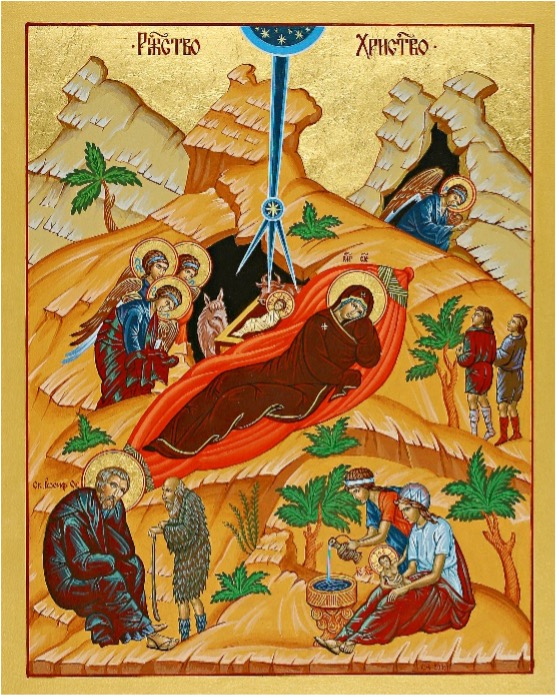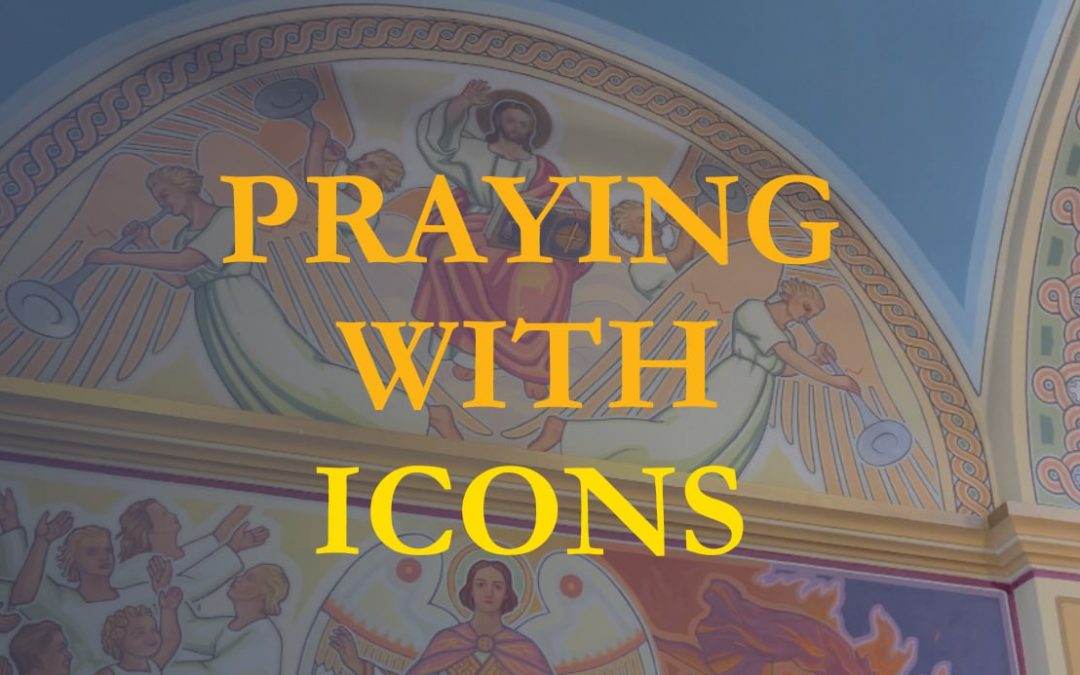December 2024
The Nativity of Our Lord. From Life to Death to Eternal Life.
Praying with Icons. Windows into Heaven. Growing in Our Friendship with Christ. The Feast of the Nativity of Our Lord is upon us!
What a wonderful way for us to conclude this year’s series on Praying with Icons by reflecting on the Christmas story and all its splendour as captured in the Icon of the Nativity.
Luke’s Gospel describes Jesus’ birth in these words: “In those days a decree went out from Emperor Augustus that all the world should be registered. This was the first registration and was taken while Quirinius was governor of Syria. All went to their own towns to be registered. Joseph also went from the town of Nazareth in Galilee to Judea, to the city of David called Bethlehem, because he was descended from the house and family of David. He went to be registered with Mary, to whom he was engaged and who was expecting a child. While they were there, the time came for her to deliver her child. And she gave birth to her firstborn son and wrapped him in bands of cloth, and laid him in a manger because there was no place for them in the inn” (Luke 2:1-7).
Yet, there is so much more to the Christmas Story. And all of these are captured in the Icon of the Nativity: Mary. Joseph. Jesus. The angels. The Wise Men. The Shepherds. The midwives. The cave. No room in the inn. The manger. So much activity and busyness!
Let us take a closer look at each of the figures and elements that make up the Nativity Icon, but at the same time let us compare them with what we find in the Resurrection Story. A huge surprise awaits us!
Our Lord’s Nativity and his Death and Resurrection. One and the same story?
The events of our Lord’s birth and his crucifixion and death are separated by some thirty-three years in the life of Jesus and only some 10 kilometres from his birth in Bethlehem to his death in Jerusalem. Relatively close in reality from one to the other. The overwhelming crowd. At Jesus’ birth, there is no room in the inn as a result of the crowds who have gathered for the census-taking, leaving Jesus to be born in a cave or stable. At Jesus’ death, the crowds cry out “Crucify him! Crucify him!” then they force him out of the city walls to be crucified there. Notice that in both Jesus’ birth and his death, it is the crowds that push Jesus out of the public square. Not much has changed in that the crowds of today often push faith in God outside the public arena.
Jesus is born in a cave, or stable. Jesus’s body at his death is placed in a cave or tomb. At his birth, Jesus is wrapped in swaddling clothes. At his death, Jesus I wrapped in similar burial cloths. The joyous news of Our Lord’s birth is proclaimed by the angels. Likewise, it is the angels that herald the glad tidings of his resurrection from the dead. The first to hear the joyous news of Our Lord’s birth are the shepherds. The first to hear the glad tidings of his resurrection from the dead are the myrrh-bearing women. In Jesus’ day, both shepherds and myrrh-bearing women are unlikely audiences given their low status in society. The shepherds at the Nativity and the myrrh-bearing women at the resurrection both are greeted by angels who proclaim “Fear not!” for we are the bearers of joyous news and glad tidings. The midwives attend to the newborn Christ-child. The myrrh-bearing women attend to the body of the Crucified Christ. The three gifts presented at Jesus’ birth by the Wise Men of gold, frankincense, and myrrh point to the purpose of Jesus’ coming to earth: royal king, divine God, and perfect sacrifice.
 Leading up to Jesus’ birth, Joseph, Mary’s spouse and Jesus’ guardian doubts that the miracle birth is brought about by the action of the Holy Spirit. At Jesus’ resurrection, Doubting Thomas refuses to believe until he sees Jesus for himself and touches Jesus’ wounded hands, feet, and side. Joy follows birthing pains. Joy follows death in the resurrection. Light follows darkness. Order and harmony follow chaos. A hollowed crib or manger cries out “Look here” at the place where the newborn Christ-child lays. A hollowed rock cries out “Don’t look here,” the one you seek has Risen from the dead, go and tell the others!
Leading up to Jesus’ birth, Joseph, Mary’s spouse and Jesus’ guardian doubts that the miracle birth is brought about by the action of the Holy Spirit. At Jesus’ resurrection, Doubting Thomas refuses to believe until he sees Jesus for himself and touches Jesus’ wounded hands, feet, and side. Joy follows birthing pains. Joy follows death in the resurrection. Light follows darkness. Order and harmony follow chaos. A hollowed crib or manger cries out “Look here” at the place where the newborn Christ-child lays. A hollowed rock cries out “Don’t look here,” the one you seek has Risen from the dead, go and tell the others!
All of these similarities among the Nativity Icon and the Resurrection Icon point to one thing. Jesus is born so that he might die. Again, Jesus is born that he might die. In the Nativity and Resurrection Icons are contained all the mysteries of Christ that point to the purpose of Jesus’ coming to earth.
Birth. Death. Rebirth.
From Jesus’ birth to his crucifixion and death upon the cross to his resurrection led us from our earthly life and death to salvation and eternal life in God and the Trinity!
Praying with Icons. Windows into Heaven. Growing in Our Friendship with Christ.
As we celebrate the Feast of the Nativity of Our Lord, may Christ, truly bless you and your family with peace, love and joy, now and in the New Year!

